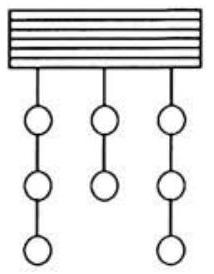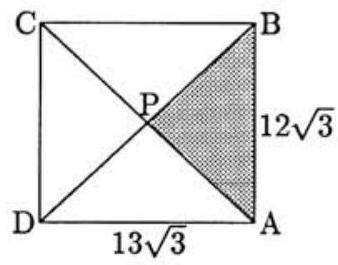¶ 1990 AIME Problems and Solutions
Problem Set Workbook
Access the downloadable workbook for 1990 AIME problems here.
Discussion Forum
Engage in discussion about the 1990 AIME math contest by visiting Random Math AIME 1990 Forum
Individual Problems and Solutions
For problems and detailed solutions to each of the 1990 AIME problems, please refer below:
Problem 1: The increasing sequence consists of all positive integers that are neither the square nor the cube of a positive integer. Find the term of this sequence.
Solution:
Problem 2: Find the value of .
Solution:
Problem 3: Let be a regular -gon and be a regular -gon such that each interior angle of is as large as each interior angle of . What is the largest possible value of
Solution:
Problem 4: Find the positive solution to
Solution:
Problem 5: Let be the smallest positive integer that is a multiple of and has exactly positive integral divisors, including and itself. Find .
Solution:
Problem 6: A biologist wants to calculate the number of fish in a lake. On May she catches a random sample of fish, tags them, and releases them. On September she catches a random sample of fish and finds that of them are tagged. To calculate the number of fish in the lake on May , she assumes that of these fish are no longer in the lake on September (because of death and emigrations), that of the fish present on September were not in the lake on May (because of births and immigrations) and that the numbers of untagged fish and tagged fish in the September sample are representative of the total population. What does the biologist calculate for the number of fish in the lake on May
Solution:
Problem 7: A triangle has vertices and . The equation of the bisector of can be written in the form . Find .
Solution:
Problem 8: In a shooting match, eight clay targets are arranged in two hanging columns of three each and one column of two, as pictured. A marksman is to break all eight targets according to the following rules:
The marksman first chooses a column from which a target is to be broken.
The marksman must then break the lowest remaining unbroken target in the chosen column. If these rules are followed, in how many different orders can the eight targets be broken?

Solution:
Problem 9: A fair coin is to be tossed ten times. Let , in lowest terms, be the probability that heads never occur on consecutive tosses. Find .
Solution:
Problem 10: The sets and are both sets of complex roots of unity. The set is also a set of complex roots of unity. How many distinct elements are in
Solution:
Problem 11: Someone observed that . Find the largest positive integer for which can be expressed as the product of consecutive positive integers.
Solution:
Problem 12: A regular -gon is inscribed in a circle of radius . The sum of the lengths of all sides and diagonals of the -gon can be written in the form
where , and are positive integers. Find .
Solution:
Problem 13: Let . Given that has digits and that its first (leftmost) digit is , how many elements of have as their leftmost digit?
Solution:
Problem 14: The rectangle at the right has dimensions and . Diagonals and intersect at . If triangle is cut out and removed, edges and are joined, and the figure is then creased along segments and , we obtain a triangular pyramid, all four of whose faces are isosceles triangles. Find the volume of this pyramid.

Solution:
Problem 15: Find if the real numbers and satisfy the equations
Solution:
The problems on this page are the property of the MAA's American Mathematics Competitions